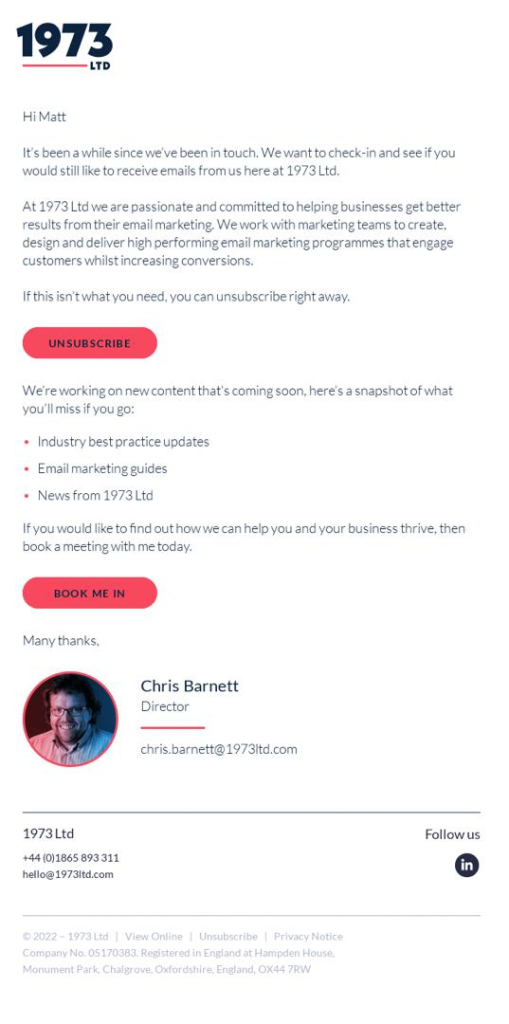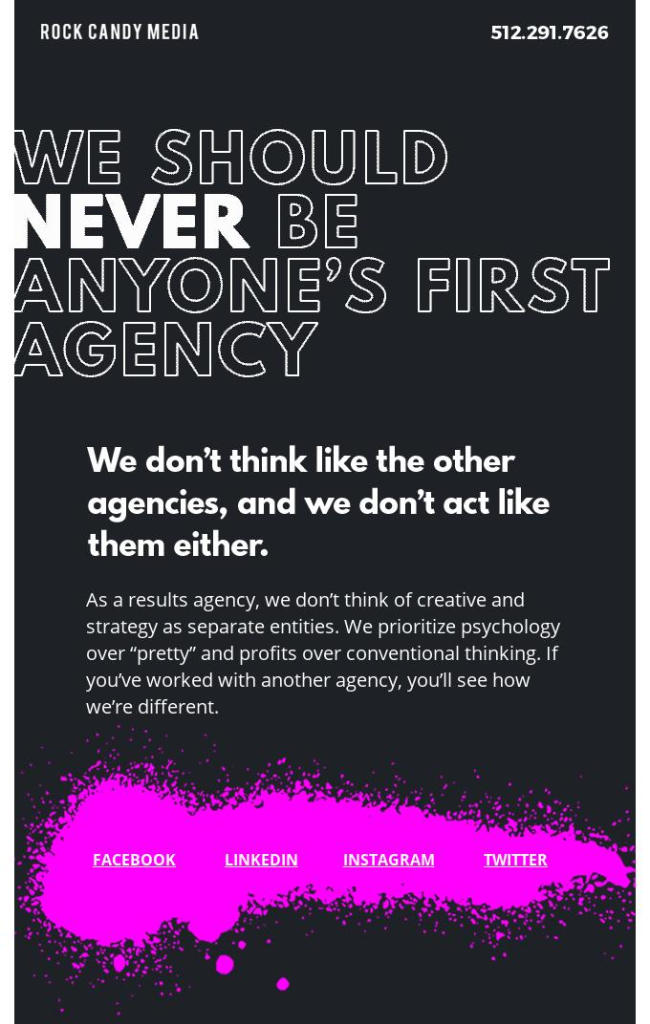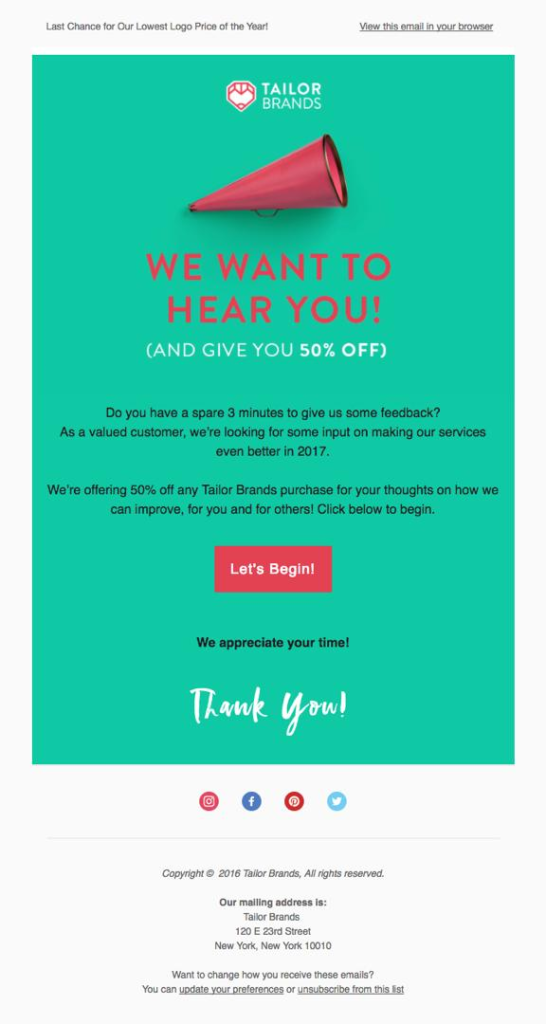Email marketing is a delicate and sometimes complicated process, yet, with an estimated 4.5 billion email users by 2024, email marketing mastery has become an essential part of marketing efforts that simply cannot be ignored. For your agency, effective email marketing campaigns can help you generate leads, improve the customer journey, and build authority in your industry.
Read Creating a Marketing Strategy that Works: Benefits, Steps, Tools
But this is only when executed properly.
In this blog we’ll show you case studies from marketing agencies, give tips on selecting email service providers, and much more.
What Is Email Marketing for Agencies?
Email marketing for agencies is the use of emails to increase clientele, spread awareness, and improve customer relations. It is a combination of digital marketing and direct advertising, which is aimed at turning leads into customers, and customers into loyal consumers. The best thing about email marketing is that it can take various shapes.
You can use it to form an effective relationship with your target audience, and you can do so through newsletters that raise awareness about your company’s story. It’s also a great tool when you want to reestablish a connection with your previous clients because you can attract them by offering limited-time promotions for your services. Strategised marketing through email newsletter platforms provides an efficient and streamlined way to distribute engaging content to your subscribers, allowing you to build a loyal community and nurture relationships with your target audience.
Read Targeted Email Marketing – How to Draft a Perfect Crisis Email
How Is It Different Than a Typical Email Campaign?
If you run a marketing agency, you should know that email marketing campaigns in this industry are quite different. They differ from the familiar emails that are typical in your “promotions” folder for several reasons:
- You aren’t just selling your services, you are also selling your agency – its expertise, experience, authority, and trust.
- Your target audience is diverse, they most likely belong to different industries, so you have to use targeted campaigns.
- Your digital agency offers different services. This could be web design, social media marketing, SEO, and more. You have to create a specific email strategy for each of these services.
- You have to employ the best digital marketing tactics for your emails. This includes your email marketing tools, the visual design in your emails, your email automation, and so on.
Although most agencies nowadays focus on social media platforms, you shouldn’t overlook the potential that lies in email marketing campaigns. According to Statista, by the end of 2024, email marketing revenue is anticipated to be close to 12.3 billion. In essence, it’s a vast channel for running campaigns and one that shouldn’t be overlooked.
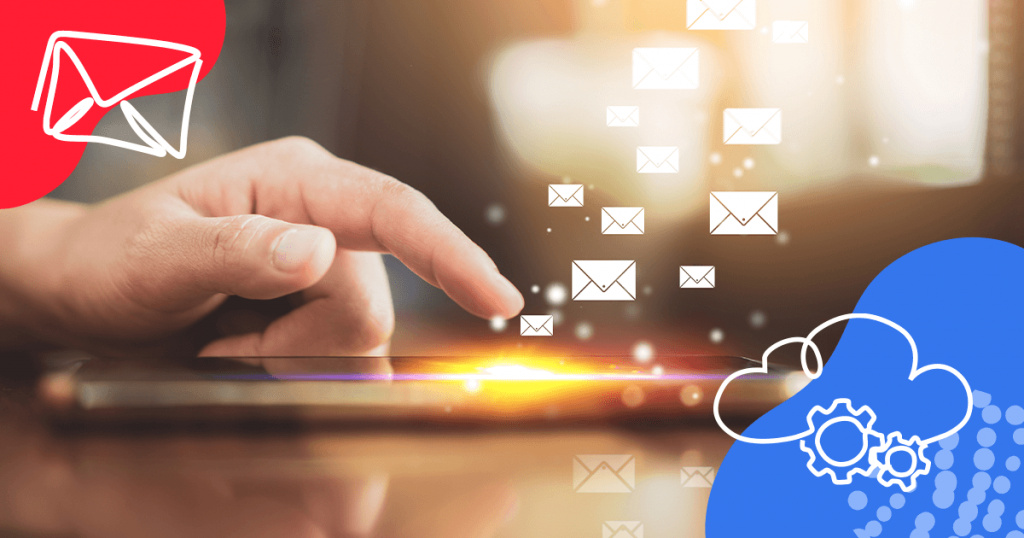
3 Examples of Successful Digital Agency Email Marketing Campaigns
We’ve featured some of the top email campaigns by some agencies that have adopted this marketing approach. Keep reading to find out why it was effective and see how they executed them. Perhaps you may get ideas on how to launch your own email campaign.
Read Email Etiquette: 11 Rules Every PR Specialist Should Follow
1973 – Follow Up Email
This email from 1973 takes a bold step at rekindling old sparks with their audience. The author uses a personalized approach by referring to the recipient by their first name (Matt). Chris also sticks with the 2nd-person perspective, which further improves the personalization of the message. Thus, making it seem that the email was specifically designed for Matt. This approach will inevitably increase open rates.
Here are some other things we like about this email:
- By giving them the option to unsubscribe, this email shows that 1973 cares about its audience and respects their choices.
- The email is personalized.
- Further reading shows that the reader might miss out on new and exciting content.
- Finally, there is a CTA that urges the user to book a meeting.
There are also some things we feel they could’ve done better. For instance, the hierarchy of content might be better if switched because some readers may not keep reading till the end. They may click the unsubscribe button in haste.
Rock Candy Media
This witty email from Rock candy media intrigues the reader. The headline, “We should never be anyone’s first agency” is a perfect hook that makes the reader ask, “Why? Please tell me more”. Rock Candy immediately follows up with answers. This email can be sent to potential customers as it gives a brief insight into the agency’s mission.
Here are some things we like about this email:
- The bold design and a proper mix of colors,
- The links to the agency’s social media,
- The captivating headline.
However, there are some things they could have done better. We suggest that a clear call to action should have been placed at the end of the email. CTAs such as “Find out more about us,” “Book a session with us,” and so on may yield favorable results. Clearer copywriting is key because the typical literacy rate is between 7th-8th grade. Their target audience may fall into this category. Remember, clear is better than clever.
Tailor Brands – Promo Deal
Last but not least, we have this absolutely genius email marketing campaign from Tailor Brands. This approach is particularly interesting because they simultaneously improve customer engagement while boosting sales. By offering a 50% off deal, they are more likely to get an increase in engagement on both sales and survey responses.
Source: Really good emails
Here are some things we like about this email:
- The clear copywriting and CTA placement,
- The 50% off deal,
- They ask for feedback.
On the other hand, they have made an error, and there is some room for improvement. The issue here is that the email isn’t personalized.
Why Is Email Marketing Important for Agencies Providing Digital Services
Agencies, small businesses, startups, and even e-commerce stores now have a wide range of digital marketing options. With the rapid development of technology, digital marketing has become an essential aspect of any business’s strategy developed to reach wider audiences and present products and services. Yet, email marketing has proved to be a top marketing option, specifically for digital agencies and not just full-service email marketing agencies. So let’s discuss some of the most important benefits of email marketing for digital agencies.
Read Staying Ahead of the Game: Why Media Monitoring is Critical for PR and Marketing Agencies
Lead Generation
With email marketing, your digital agency can now directly reach out to prospects. You don’t have to wait for referrals or hope they find your agency by accident. Simply building an email list and employing segmentation tactics makes it easier to reach out to people who would be most interested in your service(s).
Read 8 Clever Ways to Generate Leads with Media Monitoring

Enhances the customer journey
Thanks to email marketing, CRM is as convenient as it can be. Your agency can build and maintain a bond with customers. For example, sharing valuable and relevant information (perhaps through the use of newsletters) can help with customer acquisition. Likewise, the personalization of email campaigns and other email marketing tactics can have a positive effect on customer retention.
Build authenticity and gain trust
Email marketing provides an opportunity to showcase your agency’s experience and expertise. It lets you position your agency as an authority in the industry. This can be done by sharing past work samples with relevant email subscribers and sharing informative pieces of content about certain services. The potentials are limitless.
Read How To Build A Content Framework That Serves Your Marketing Goals
Track results and measure success
By using a good email marketing platform, you are provided with metrics that show you the conversion rate, click-through rate, and other analytics from your email campaigns that you can analyze to know what works and what doesn’t. In addition, you can use a/b testing to test out different email campaigns and also check the unsubscribe rates. This way, you can have a clear view of whether the email campaign is providing enough value or if it is too frequent.
Cost-effective
Email marketing is one of the cheapest forms of online marketing, yet it is as effective as any of its more expensive alternatives. This makes it suitable for agencies with low marketing budgets. Businesses can send emails to their subscribers without incurring significant costs, and the ROI (return on investment) can be high. According to a recent study, the average ROI for email marketing is $42 for every $1 spent.

How to Do Email Marketing for Your Agency?
Email marketing can be a powerful tool if used in the right way. Agencies can use it to promote services, build trustful connections with their target audience, and generate new leads. If the strategy is thoughtfully designed, it can be an effective way to communicate with consumers, establish thought leadership and authority, and drive revenue growth. However, email marketing for agencies is delicate. Nonetheless, you shouldn’t fret because when you follow specific steps, the process is broken down and made easier, and there is less room for mistakes.
#1 Define Email Strategy
Before you embark on your email marketing journey, you need to have a map that highlights your goals and create a plan that helps you achieve these goals – this is strategy. First of all, ensure you have outlined your agency’s goals. With them in mind, you should be able to create an approach to solving these goals. And on top of it, you should take note of key performance indicators. For example, if your agency has a goal to increase your blog readers, your email marketing strategy might be to share relevant links to blog posts that relate to your newsletters.
Read Email Etiquette: 11 Rules Every PR Specialist Should Follow
#2 Choose Email Marketing Software
Your software choice is your partner in the world of email marketing, so choose wisely. There are so many options available, and it may seem overwhelming. Popular email marketing software for agencies includes Campaign Monitor, Klaviyo, Hubspot, and Mailchimp. You can choose which one suits you best based on a number of factors – e.g. features and functionalities, pricing, ease of use, and customer support. Nonetheless, whatever email marketing solutions you opt for, they must support the following features:
- Drip campaign-eligible: Email drip campaigns are automated emails sent to your existing and potential customers at scheduled times.
- Drag and Drop email design: With this tool, you can edit professional-looking emails without any prior knowledge of HTML. This tool improves the user experience of agencies who have just begun email marketing
- Tracking tools: This helps you keep track of KPIs, analytics, and other forms of metrics that help you know what you’re doing right.
- Automated messages: This feature helps you keep in touch with your subscribers. For example, if your agency is on a sabbatical, you can have your software send out responses to any email message you get during this period. You can also craft automatic follow-up emails to be sent after a potential customer makes a key action so you can guide them through the customer journey. Consequently, this feature is good for customer retention.
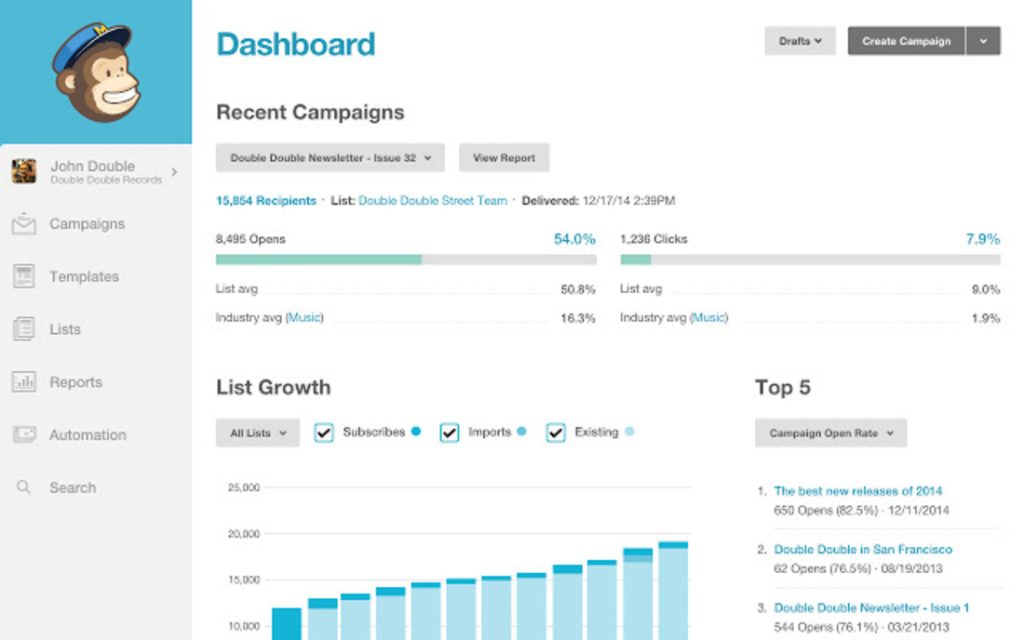
#3 Collect Contacts and Validate Them
A well-defined audience is essential for any marketing approach – email marketing included.
To build your email list, you need to have a clear understanding of your target audience and create a plan to attract them. Building an authentic email list may seem like a lot of work; however, buying an email list isn’t a wise alternative.
Think of it this way – it’s like unironically buying a ticket to the spam folder. So, you may see big numbers in your subscribers’ list, yet a continuous plummet in your open rates. However, if you stick to certain tips on how to build an email list honestly, you will build a stronger customer base with ease.
Use pop-ups on your website: Pop-ups are not exactly known for their good reputation, but if used strategically, they can yield positive results. You can place these ads on your blog, about us page, etc. In addition, these ads should be scheduled to pop up after a couple of minutes or when the reader has finished reading a blog post. Finally, don’t forget to make the ad enticing enough to attract new subscribers.
Make this your CTA: Attract new leads by making your call-to-action direct leads to your subscribe button. This can be CTAs in your blog posts or landing pages. It is most effective when it relates to that specific blog or landing page. For example, in a blog post about how to use SEO, your CTA can be, “For more tips on effective SEO practices, sign up for our weekly newsletter.”
Spread the good news to your social media: Social media is perhaps the fastest way to get organic growth. Leverage your audience on social media by telling them about your newsletter and the value it offers. You should also encourage them to share these posts as often as possible; this way, people will find helpful content from your past email newsletters. If they find it helpful enough, your LinkedIn followers will almost certainly share your posts.
From there, people outside your follower bracket can also see your posts, thereby gaining you referrals. For example, if you have a strong base on LinkedIn, you should share b2b marketing posts that show case studies, tips, and guides. That way, other LinkedIn users can see your post, check out your newsletter, share, and the loop of lead generation continues.
Read How to Promote Your Small Business on Social Media With A Limited Budget in 6 Steps
#4 Craft Content and Start Sending
The next step is the content creation process. For this stage, you can hire an email copywriter to help you come up with content and ease the content marketing process. From the subject lines to the CTA, an experienced copywriter will help you optimize content to hook your subscribers.
Nonetheless, if you feel you know your audience better than anyone, feel free to do the email copywriting yourself. What matters most is that it’s good. Plus, your audience may prefer to know that they are receiving the emails directly from you.
Here are some tips to help you craft better content for your email marketing campaign:
- Personalize your message,
- Hook them in your subject lines,
- Breakdown complex words,
- Be clear and concise,
- Share relevant content.
Once you’re done with content creation, the next step is to start sending your emails to relevant prospects. Emphasis on relevance. To avoid the spam box, you should only send certain emails to certain subscribers. You can employ email segmentation, as we discussed earlier. This will simultaneously help improve your click-through rates, and that’s why it’s a win-win situation.
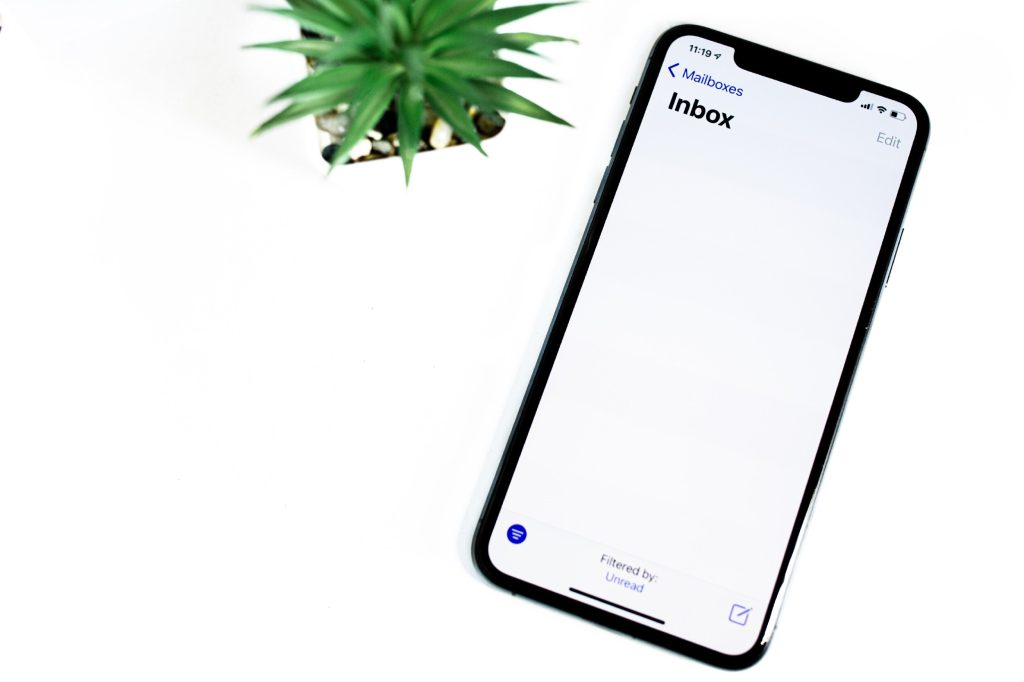
#5 Analyze Results & Test Different Things
For the last step, you need to examine your performance, note what works, and discard what doesn’t. To do this, you need to highlight your KPIs or key performance indicators. The relevant KPIs you should track include click-through rates (CTR,) email open rates, email deliverability rates, email subscriber numbers, and so on. Plus, as a digital agency, you should know that there is no one-size-fits-all approach to marketing; the same goes for email marketing. There is a vast array of methods, strategies, and options to choose from.
Hence, you cannot stick to a singular approach every time – even if it delivers favorable results. You never can tell, you might just be leaving opportunities on the table. For this reason, we recommend that you try out A/B testing. This lets you try out different approaches to your email marketing so you can analyze success rates and stick to what email strategy works best. You can test different elements such as subject lines, CTAs, email design, and copy. Once you’ve identified the winning version, you can send it to the rest of your email list.
Read Cold Emailing for Marketers: Use Cases, Best Practices, and Templates
Enhance Email Marketing Efforts by Monitoring Social Media
One important component of an effective email marketing strategy is social media monitoring. Often overlooked, it can provide valuable insights into the preferences, behavior, demographics, and sentiment of the target audience. By gathering this information, you can use it to create more personalized and targeted email campaigns, leading to higher engagement and conversion rates. Social media monitoring can also help agencies identify potential brand crises or negative feedback early on. This provides enough time to address these issues before they become more significant problems.
Read How to Use Brand Monitoring to Improve Email Deliverability
How to Track and Monitor Social Media?
It’s important to track different social media platforms for many purposes. But tracking them to gain leverage for your email marketing efforts means gathering data and insights. This information can help you improve your strategies with ease, and make data-driven decisions. Here are some steps you can take to successfully monitor social media:
- Determine which social media platforms your target audience uses the most and monitor those platforms. For example, if your target audience is primarily professionals, then LinkedIn may be the best platform to monitor.
- Social media listening tools allow businesses to monitor social media for mentions of their brand or industry keywords. These tools can provide valuable insights into customer preferences, pain points, and sentiment.
- Monitoring competitors‘ social media platforms can provide businesses with insights into their competitors’ strategies and help them identify opportunities to differentiate their own email marketing campaigns.
- Engaging with followers on social media can help businesses build relationships with their target audience and gain a better understanding of their needs and preferences. Businesses can use these insights to create more personalized and targeted email campaigns.
- Social media platforms provide a range of metrics, such as engagement rates, reach, and impressions, that businesses can use to measure the effectiveness of their social media and email marketing strategies. By analyzing these metrics, businesses can make data-driven decisions to optimize their strategies for maximum effectiveness.
Additionally, by tracking mentions of your agency or competitors, you can stay informed about industry trends and adjust all your marketing strategies accordingly.
Read Media Monitoring: The Ultimate Guide
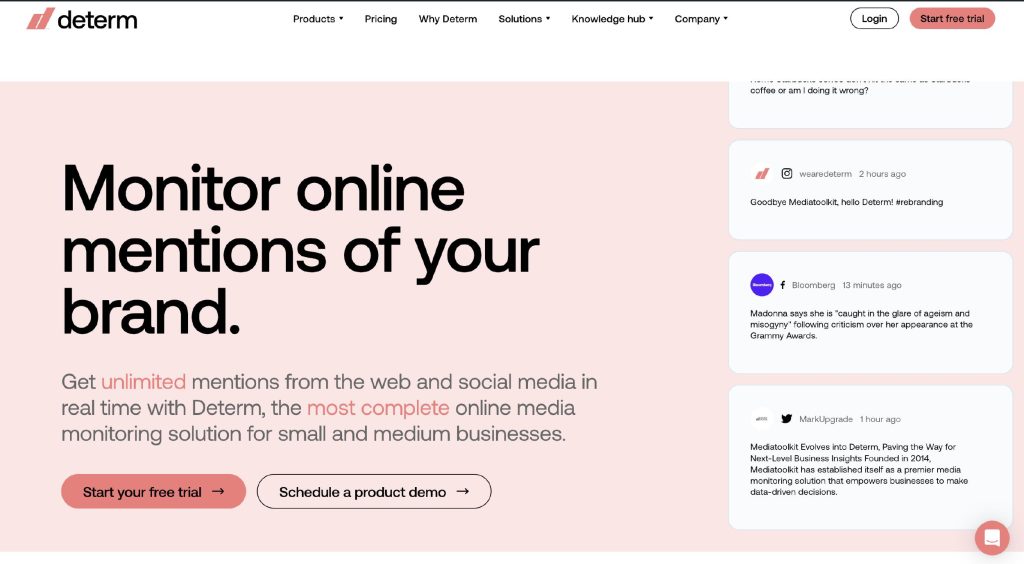
Grow Your Mailing List Through Integration
Social media has become an integral part of modern marketing strategies, with 54% of consumers using social media to research products and services before making a purchase decision. However, businesses that solely rely on social media for their marketing efforts may be missing out on opportunities to reach their target audience through other channels, such as email.
According to a study by Campaign Monitor, email marketing has an ROI of 4,200%, making it a highly effective way to engage with customers and drive revenue. By integrating social media into their email marketing campaigns, agencies can increase their reach, improve engagement, and grow their mailing list.
Follow These Steps for Integration
Digital marketing efforts work best when combined, and the same goes for email marketing efforts and social media campaigns. Combining the two gives you a powerful way to grow your mailing list and, in the end – increase engagement with your target audience. Here are some effective ways to do so:
- Include social media links and share buttons in your emails – this makes it easy for your subscribers to follow you on social media platforms. Also, encourage them to share your content with their friends and followers.
- Use your social media platforms to promote your email list and encourage your followers to sign up. The smart way to do this is to offer incentives such as exclusive content or special promotions for new subscribers to incentivize sign-ups.
- Encourage your followers to create and share content related to your brand, then feature it in your email marketing campaigns. This will not only help you generate more content but also increase engagement and loyalty with your followers.
- Creating a unique hashtag that represents your brand can help you track engagement and user-generated content related to your brand. Include your custom hashtag in your email marketing campaigns to encourage subscribers to share your content on social media and use the hashtag when sharing.
- Host social media contests and promote them through your email marketing campaigns to encourage followers to engage with your brand and sign up for your email list.
- Use social media platforms to gather insights into your target audience’s preferences and demographics. With this valuable information, you can create more personalized and targeted email marketing campaigns that resonate with your audience.
- Additionally, use social media platforms like Facebook and LinkedIn to create targeted ads that reach your desired audience. Target your ads based on factors such as age, location, interests, and job title.
Bonus Tip: You can hire a white-label agency to help you do email marketing campaigns for your agency.
Why Your Agency Should Consider Hiring a White Label Agency for Your Email Marketing
A white label is a digital marketing agency that helps you with marketing efforts for your agency without taking credit for the work. It may seem a bit unnecessary to hire one, especially if your agency already offers these services. Yet, their services might come in handy if you need extra hands with other areas such as project management, web design, and of course, email marketing.
Examples of B2B Email Marketing White-Label Service Agencies
There are a lot of email marketing agencies in the USA and around the world that offer white-label services. However, not all businesses have the resources or expertise to execute successful email marketing campaigns in-house, so you should only work with the best. We will provide you with some award-winning agencies that offer white-label services on email marketing
- InboxArmy: This email marketing company has loads of experience helping small businesses, startups, and larger brands with their email campaigns. They know what ESP fits your agency best, the right strategies to embark upon, and how to craft compelling email copies.
- KlientBoost: This is an all-around agency that offers an on of digital marketing services, including email marketing. They are the go-to agency for small businesses, e-commerce stores, and other brands that wish to optimize their email campaigns.
- Veza: The team of experts here makes it a focal point to enhance the email marketing efforts of their agency partners to an optimum level. They operate on either a one-off project or a recurring basis.

Pros and Cons of White Label Agencies
White-label agencies have become increasingly popular among businesses looking to outsource their marketing activities. These agencies provide services such as website design, social media management, SEO, and PPC advertising, among others. While outsourcing to a white-label agency can have several benefits, it also comes with its own set of drawbacks. Here are some pros to hiring a white-label email marketing agency:
- They are experienced and sometimes specialize in certain areas (you should only choose to work with reputable email marketing experts).
- With their help, you can do more in less time.
- They make it easier to expand your agency.
Unfortunately, a white-label agency comes with its disadvantages as well. The cons of hiring a white-label agency for your email marketing might include inconsistent delivery and their pricing because they may be well over your budget. Additionally, they may struggle to understand your audience and may leave you outside the loop of content creation as they do not operate in-house. So, there you have it – the must-knows before you hire a white-label agency. If you feel like the risks are greater than the benefits, feel free to do the work yourself by following the steps we shared earlier.
Email Marketing Can Be an Integral Part of Your Agency’s Growth
In summary, email marketing is the main weapon in your digital marketing arsenal. With the ability to reach a large audience at a relatively low cost, email marketing can help agencies build relationships with clients, promote their services, and generate new leads. Additionally, this marketing approach allows agencies to measure the effectiveness of their campaigns and make data-driven decisions to optimize their strategy for maximum results.
In the end, it should be an integral part of an agency’s overall marketing strategy, helping them achieve its growth goals and stay ahead of the competition. By accepting it, mastering it, and implementing it in 2024, you can further improve your marketing efforts and the agency’s success. We wish you the best of luck!
Dzenana Kajtaz
Technical Content Writer @ Mailtrap with an educational background in software engineering and 4 years of experience as a writer, editor, and content marketer. Currently, she mainly focuses on writing about email infrastructure, sending, testing, and creating fun and engaging content on email marketing topics.
